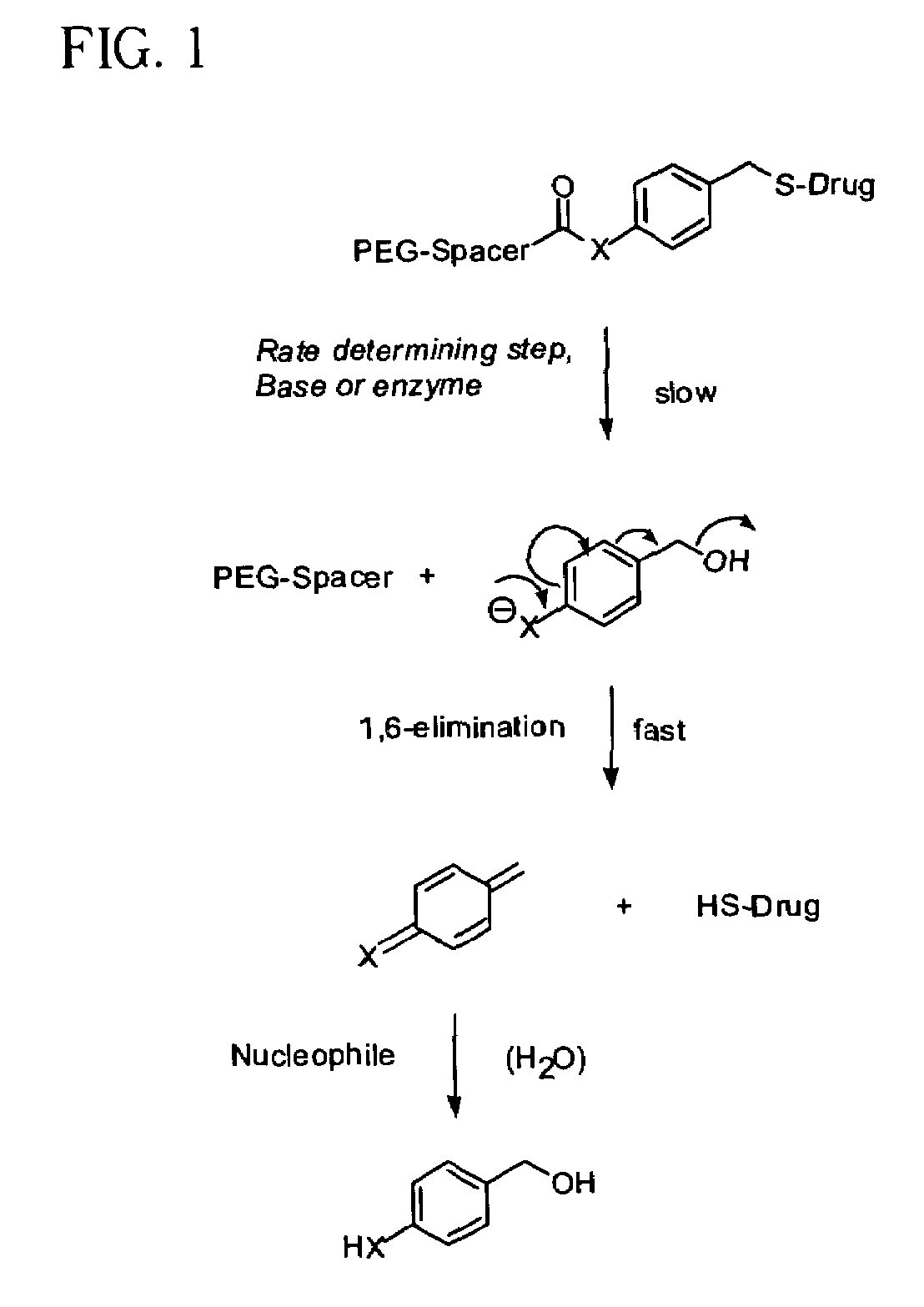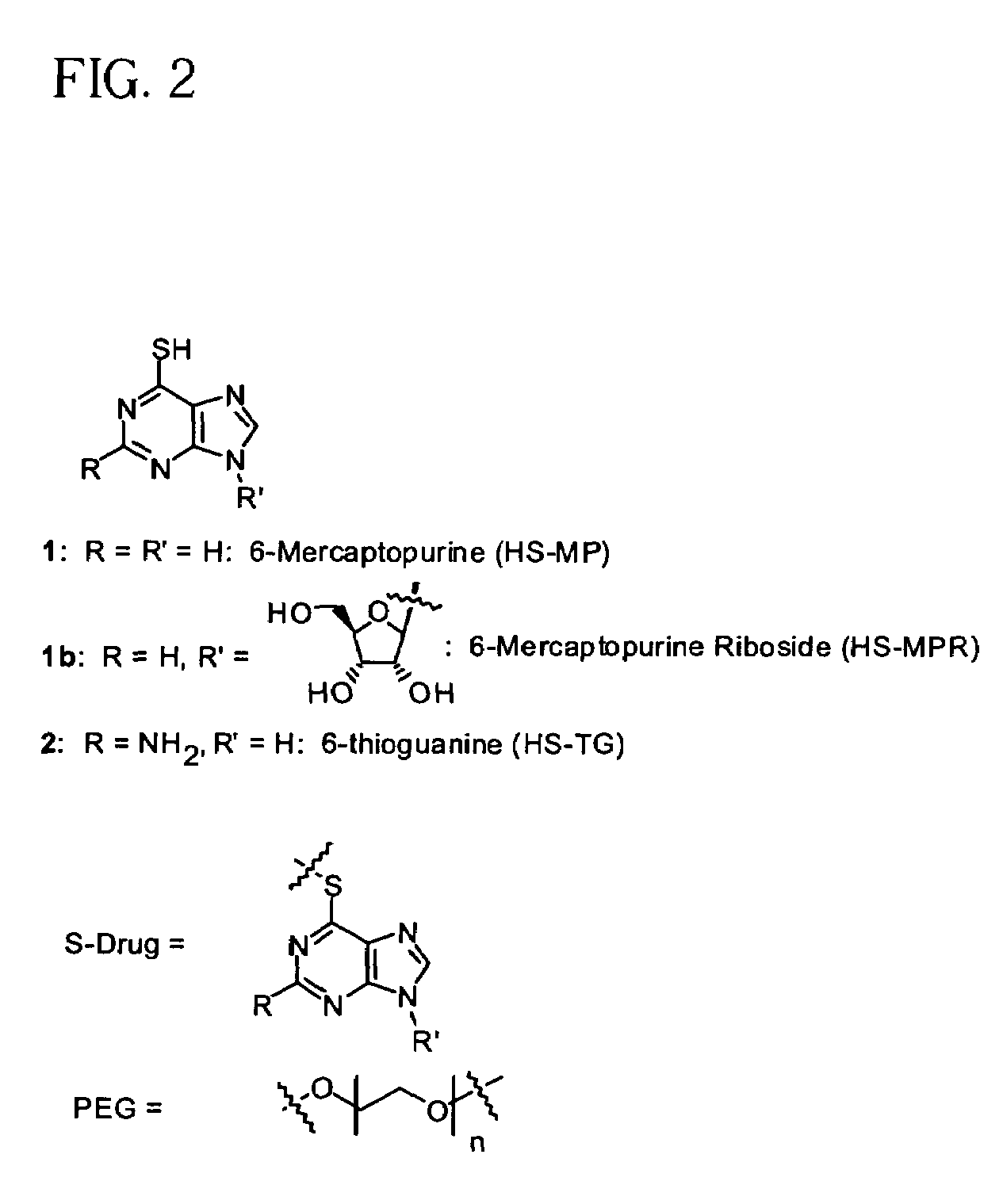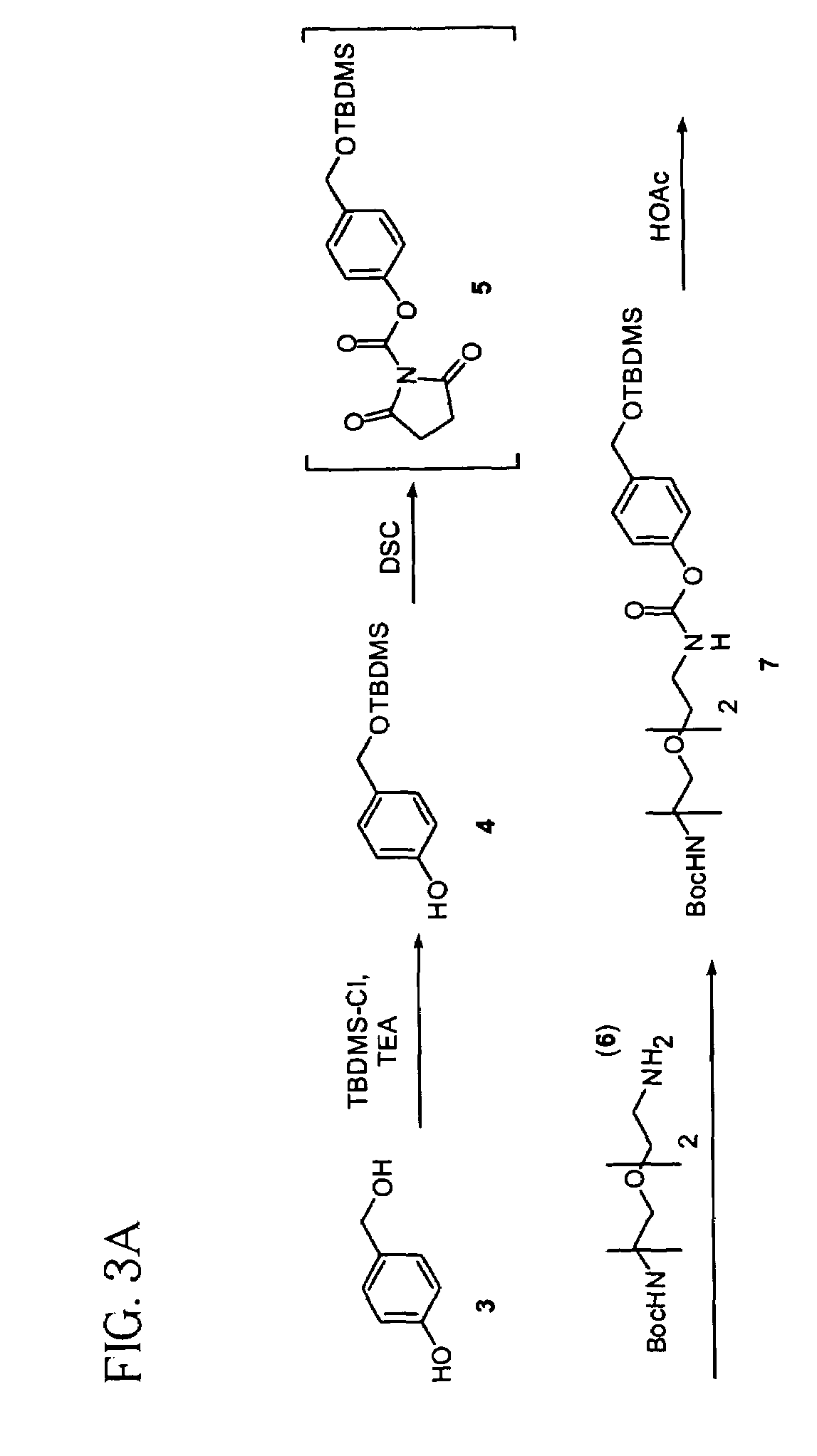Polymeric thiol-linked prodrugs employing benzyl elimination systems
a benzyl elimination system and polymer technology, applied in the field of long-acting, thiol-linked polymer conjugates, can solve the problems of complex pharmacokinetics and bioavailability problems of materials, and achieve the effect of higher payload
- Summary
- Abstract
- Description
- Claims
- Application Information
AI Technical Summary
Benefits of technology
Problems solved by technology
Method used
Image
Examples
example 1
Compound 4
[0155]A solution of 4-hydroxymethyl phenol (3, 9.3 g, 75 mmol) in DMF (50 mL) was flushed with anhydrous nitrogen gas for 10 minutes, followed by addition of TBDMS-Cl (12.44 g, 82 mmol). The reaction mixture was cooled to 0° C., followed by addition of solution of TEA (30.36 g, 300 mmol) in DMF (25 mL). The reaction solution was stirred overnight at room temperature and concentrated in vacuo. The residue was partitioned between water (100 mL) and DCM (200 mL) to extract the product into DCM twice. The organic layers were combined and dried over anhydrous MgSO4 followed by removal of the solvent in vacuo to give the product 4 (16.3 g, 91%): 13C NMR δ−5.344 (2 Si×CH3), 18.285 (Si—C(CH3)3), 25.850 (Si—C(CH3)3), 64.840 (Ar—CH2O), 115.221 (Ar—C2), 127.842(Ar—C3), 132.962 (Ar—C4), 155.248 (Ar—C1).
example 2
Compound 7
[0156]Pyridine (983 mg, 12.43 mmol) was added to a suspension of 4 (2.7 g, 11.3 mmol) and DSC (3.18 g, 12.43 mmol) in CHCl3 (140 mL) and the mixture was refluxed overnight followed by cooling to room temperature. Mono-Boc-diamine spacer(6, 3.398 g, 13.7 mmol) was added to the solution and the reaction mixture was stirred at room temperature overnight, followed by wash with 0.1N HCl (3×100 mL) and brine (100 mL). The organic layer was dried over anhydrous MgSO4 and the solvent removed in vacuo. The residue was dissolved in hexane (100 mL) followed by filtration of insoluble impurities. The hexane filtrate was concentrated to give product 7 (5.1 g, 88%): 13C NMR δ−5.469 (2×Si—CH3), 18.235 (Si—C(CH3)3), 25.790 (Si—C(CH3)3), 28.263 (O—C(CH3)3), 40.230 (CH2NH), 40.917 (CH2NH), 64.392 (Ar—CH2O), 69.892 (CH2O), 70.192 (CH2O), 70.253 (CH2O), 79.305 (OC(CH3)3), 121.371 (Ar—C2), 126.943 (Ar—C3), 138.482 (Ar—C4), 149.960 (OC(═O)NH), 154.936 (OC(═O)NH), 156.096 (Ar—C1).
example 3
Compound 8
[0157]Compound 7 (5 g, 9.76 mmol) was dissolved in acetonitrile (30 mL) and water (30 mL) followed by addition of HOAc (90 mL). The reaction mixture was stirred at room temperature for 1.5 hours, followed by the removal of the solvent. The residue was dissolved in DCM (300 mL), washed with water (3×300 mL), dried over anhydrous MgSO4. The solvent was removed in vacuo to give the product 8 (4.1 g, 80%): 13C NMR δ 28.233 (OC(CH3)3), 40.184 (CH2NH), 40.871 (CH2NH), 64.484 (Ar—CH2O), 69.811-70.191 (4×CH2O), 79.228 (OC(CH3)3), 121.661 (Ar—C2), 127.950 (Ar—C3), 138.177 (Ar—C4), 150.418 (OC(═O)NH), 154.875 (OC(═O)NH), 156.111 (Ar—C1).
PUM
| Property | Measurement | Unit |
|---|---|---|
| Fraction | aaaaa | aaaaa |
| Fraction | aaaaa | aaaaa |
| Fraction | aaaaa | aaaaa |
Abstract
Description
Claims
Application Information
 Login to View More
Login to View More - R&D
- Intellectual Property
- Life Sciences
- Materials
- Tech Scout
- Unparalleled Data Quality
- Higher Quality Content
- 60% Fewer Hallucinations
Browse by: Latest US Patents, China's latest patents, Technical Efficacy Thesaurus, Application Domain, Technology Topic, Popular Technical Reports.
© 2025 PatSnap. All rights reserved.Legal|Privacy policy|Modern Slavery Act Transparency Statement|Sitemap|About US| Contact US: help@patsnap.com



